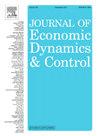Life expectancy and politics of public education and pension with endogenous fertility
IF 1.9
3区 经济学
Q2 ECONOMICS
引用次数: 0
Abstract
Implications of increased life expectancy on parental fertility decisions and subsequent shifts in political influence between younger and older generations carry significant consequences for government policies concerning education and pension. This study introduces an overlapping generations growth model incorporating these effects, qualitatively indicating that increased life expectancy correlates with lower fertility rates, decreased education expenditure-GDP ratio, and increased pension benefit-GDP ratio. A model simulation evaluates the impact of the projected increase in life expectancy until 2100 on four country groups: synthetic rich OECD, synthetic rich OECD Europe, Japan, and the United States. The findings demonstrate similar trends as in the qualitative analysis, yet growth rates are projected to vary significantly across regions and countries due to differing life expectancy increases.
预期寿命与内生生育率下的公共教育和养老金政治
预期寿命延长对父母生育决定的影响以及随后年轻一代和老一代之间政治影响力的转移,对政府的教育和养老金政策产生了重大影响。本研究引入了一个包含这些影响的世代重叠增长模型,定性地表明预期寿命的延长与生育率的降低、教育支出与国内生产总值比率的降低以及养老金福利与国内生产总值比率的提高相关。模型模拟评估了 2100 年前预期寿命预期增长对四个国家组的影响:合成富裕经合组织、合成富裕经合组织欧洲、日本和美国。结果显示了与定性分析类似的趋势,但由于预期寿命的增长不同,不同地区和国家的增长率预计会有很大差异。
本文章由计算机程序翻译,如有差异,请以英文原文为准。
求助全文
约1分钟内获得全文
求助全文
来源期刊

Journal of Economic Dynamics & Control
ECONOMICS-
CiteScore
3.10
自引率
10.50%
发文量
199
期刊介绍:
The journal provides an outlet for publication of research concerning all theoretical and empirical aspects of economic dynamics and control as well as the development and use of computational methods in economics and finance. Contributions regarding computational methods may include, but are not restricted to, artificial intelligence, databases, decision support systems, genetic algorithms, modelling languages, neural networks, numerical algorithms for optimization, control and equilibria, parallel computing and qualitative reasoning.
 求助内容:
求助内容: 应助结果提醒方式:
应助结果提醒方式:


